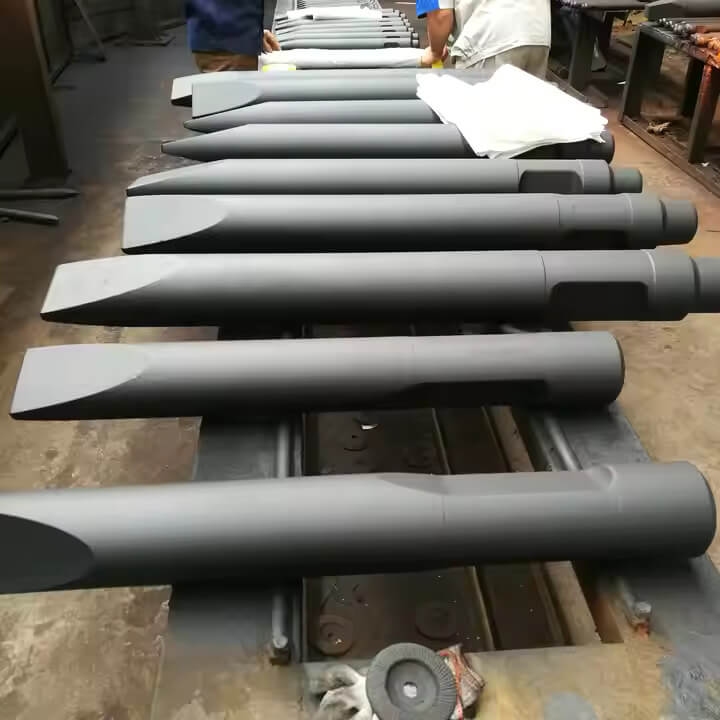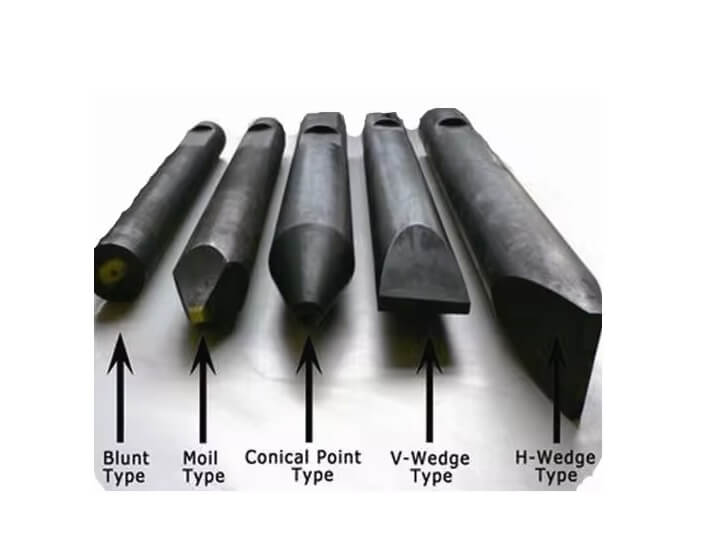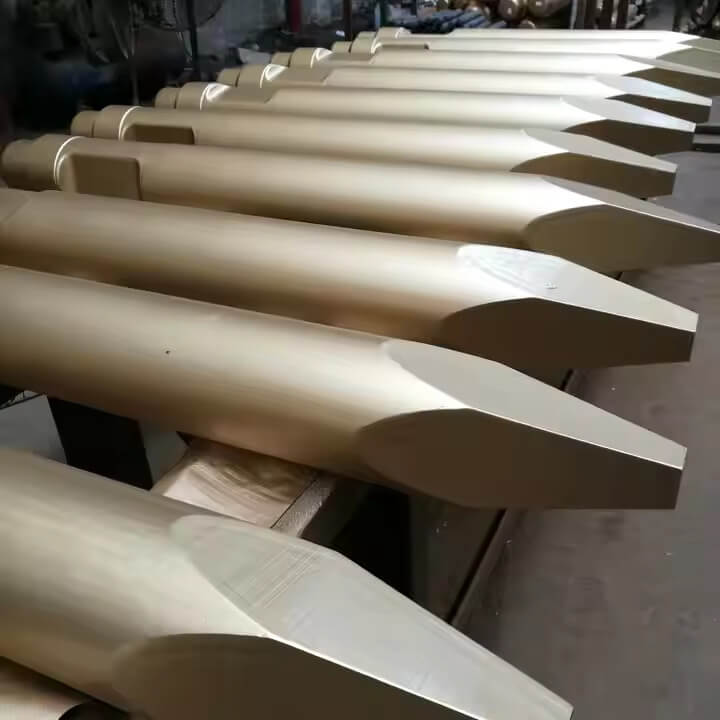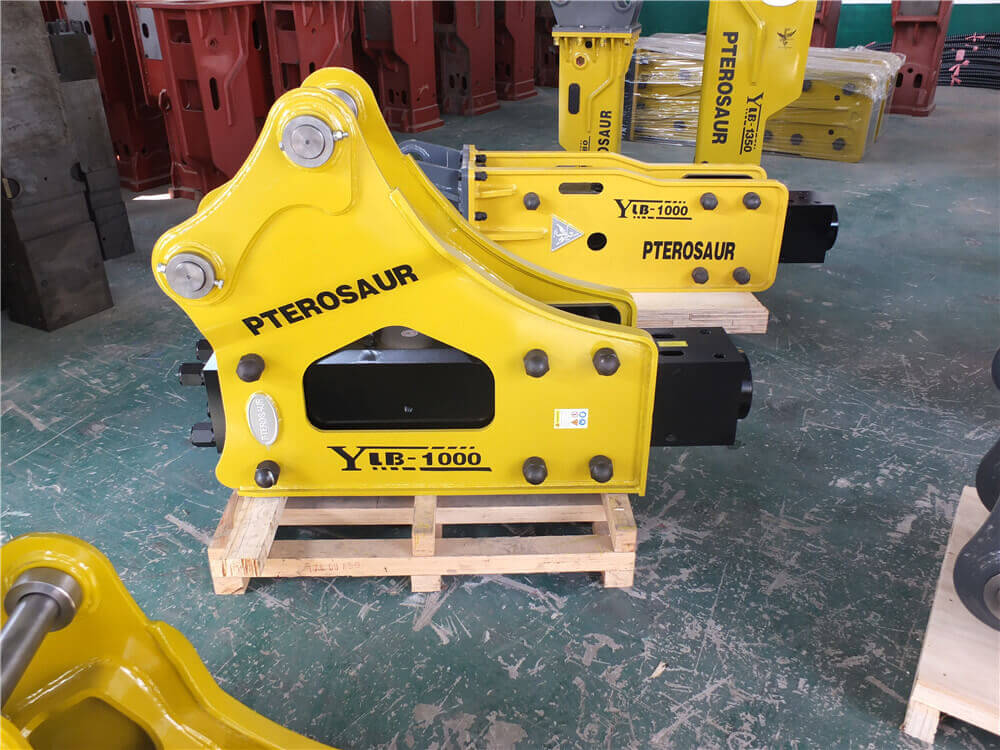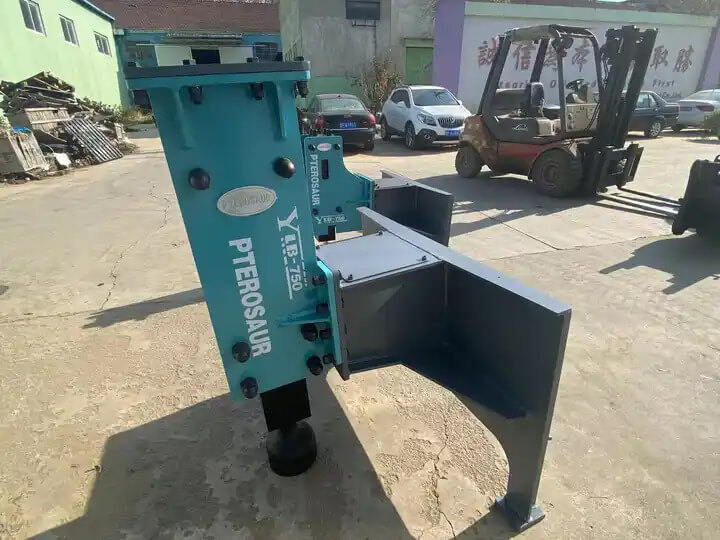Material: 40CrMo, 42CrMo
Chisel Diameter: 45-210 mm
Chisel Types: Moil Point, Blunt Tool, Flat, Wedge
Processing: Advanced Heat Treatment, Anti-Wear
Certification: CE & ISO
Overview
In the construction and mining industries, choosing the right breaker chisel is essential for optimizing excavation performance. Different types of chisels are suited to specific applications, making it vital for industry professionals to understand the specifications, advantages, and best use cases of each type. This guide explores popular breaker chisel types, their specifications, advantages, applications, and common questions to assist in informed decision-making.
Major Breaker Chisel Types and Specifications
| Chisel Type | Shape | Primary Use | Length (mm) | Diameter (mm) | Hardness (HRC) |
|---|---|---|---|---|---|
| Moil Point | Pointed | Concrete demolition | 400 – 1000 | 60 – 110 | 48 – 55 |
| Flat Chisel | Flat-edged | Surface breaking | 450 – 900 | 60 – 110 | 48 – 55 |
| Blunt Chisel | Blunt-ended | Rock and block breaking | 400 – 800 | 60 – 120 | 50 – 58 |
| Pyramid Chisel | Four-edged tip | Asphalt and hard rock | 450 – 1000 | 70 – 110 | 50 – 60 |
| Conical Chisel | Tapered | Precision breaking tasks | 400 – 850 | 60 – 100 | 48 – 55 |
Note: Specifications may vary based on the manufacturer. For more accurate specs, contact us.
Key Advantages of Different Chisel Types
- Moil Point Chisels: Highly effective in concrete and general demolition tasks due to their pointed shape, allowing for targeted impact.
- Flat Chisels: Ideal for tasks that require breaking along a specific line, such as in trenching and surface demolition, as the flat edge provides better directional control.
- Blunt Chisels: Built for heavy-duty work on hard surfaces like rock and stone, blunt chisels distribute impact over a larger area, making them suitable for reducing large blocks.
- Pyramid Chisels: Their multi-edge design maximizes force distribution, making them excellent for breaking asphalt, high-strength concrete, and other dense materials.
- Conical Chisels: The tapered shape offers precision control, ideal for detailed or delicate breaking tasks where accuracy is essential.
Application Scenarios
- Concrete Demolition: Moil and flat chisels are particularly useful in breaking through concrete structures, ensuring focused impact and efficient breaking.
- Roadwork and Infrastructure: Pyramid chisels are often used in road maintenance and construction due to their capacity to cut through asphalt and dense materials quickly.
- Mining and Quarrying: Blunt chisels are best suited for mining operations, where breaking down larger rock formations is necessary.
- Trenching and Foundation Work: Flat and conical chisels allow for precise line breaking and are often used in trenching and foundational tasks in construction projects.
Customer Feedback
Feedback from experienced operators highlights the performance of these chisels across a range of tasks:
- Ethan P., Demolition Contractor: “Using pyramid chisels on our road projects has really improved efficiency in asphalt removal. They hold up well under constant use.”
- Linda S., Quarry Operator: “Blunt chisels have been a game-changer in our rock-breaking operations. They withstand high-impact work and help us move materials faster.”
- Raj M., Construction Foreman: “For foundation work, we rely on flat chisels for precise breaks. The flat edge makes it easy to control the direction and depth of the break.”
Frequently Asked Questions (FAQ)
1. Which chisel type is the most versatile for general use?
Moil point chisels are widely used for general demolition tasks, offering versatility for a variety of surfaces including concrete and medium-density rock.
2. How do I determine the right chisel hardness for my application?
Harder chisels (50 – 60 HRC) are best for dense materials like rock, while softer chisels (48 – 55 HRC) are suitable for materials like concrete. For tailored advice, contact us with your application details.
3. How often should chisels be replaced?
The replacement schedule depends on usage frequency, material hardness, and chisel quality. Regular inspections are recommended to identify wear that could impact performance.
4. Are these chisels compatible with other brands of hydraulic breakers?
Most chisel types are designed for compatibility across multiple brands. Always check compatibility specifications or consult with us for confirmation.
Conclusion
Selecting the right breaker chisel type can greatly enhance the efficiency and lifespan of your equipment. With options like moil point, flat, blunt, pyramid, and conical chisels, there is a solution to meet every demolition, construction, and excavation need. For detailed specifications and personalized recommendations, reach out to our team and optimize your choice of chisel for peak operational performance.

